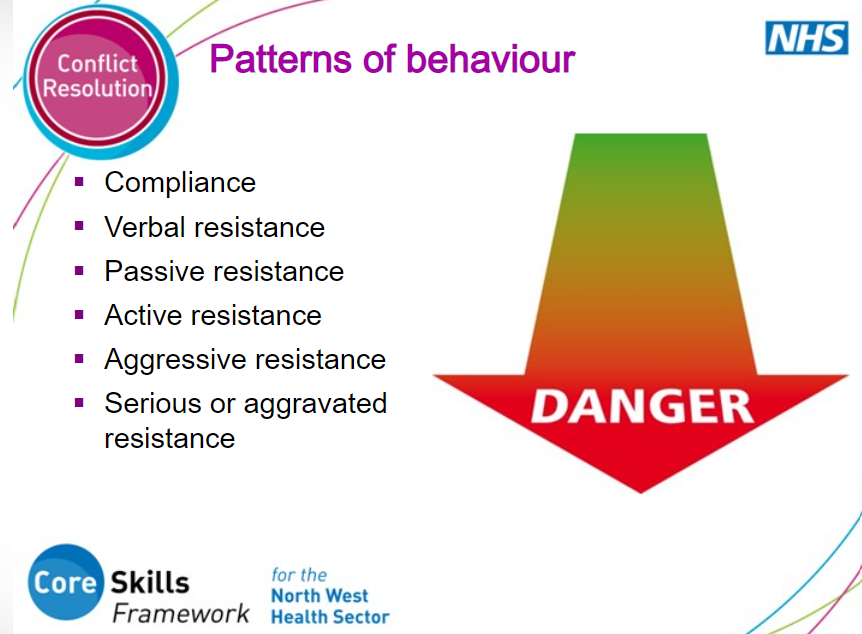Dealing with Conflict
1. Avoid mirroring/ confrontation.
- React positive, stay calm, break the cycle, and Keep control
2. Two forms of communication (Positive vs negative)
|
Positive Communication |
Negative communication |
|
Help to
resolve conflict, reduce stress and anxiety of recipient |
Worsen the
situation, increase of stress and anxiety of the recipient |
|
-Highlight positive actions -Suggest positive results can be gained |
|
3. Identify the communication barrier, and work on it.
e.g. language, culture (what we perceive as polite might not be the same to another person), ailments & disability, your attitude (prejustice)
4. Non-Verbal Communication
e.g. posture, your personal presentation (how we look)
5. Bad behavior of a person - don't take it personally
- some people can be in bad mood, aggressive
- you are just their convenient target
- let them vent their frustration
6. Aware of the pattern of behavior
- it could be unlikely you are able to predict the speed of change
E.g. PALMS (position, attitude, look/listen, make space, stance)
8. Post Crisis Management
- Be empathetic, Avoid pity for her/her, Be aware/careful with your wording, Report incident, Self-reflection
9. Aware of the danger, know the red flag
- make sure you are safe
- Always be alert on People, Object, Place
- Are you in disadvantaged situations, number of people, dangerous weapons, exit door
Be alert on possible red flag
- direct/prolonged eye contact, facial color changes, lip tightening, fist clenching
10. Mental Risk Assessment
- ?? substance influence or psychosis
11. Know your right
- Right to self-defense, by using the minimum amount of force that is proportional to the seriousness of evil to be prevented



Comments
Post a Comment